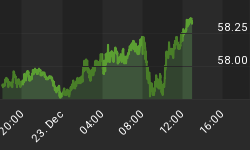If the Dec high was point H of Linds ay's long cycle (approximately 20 years) as suspected then we can examine past declines from H to I to get an idea as to how low this decline will go. Unfortunately, with only four previous long cycles to examine (since 1921) the sample size is less than "significant".

The average decline from H to I is 23%. The smallest decline was 10% (1990) and the largest was 45% (1973-74).
If the Dow falls 10% from the Dec high point I will occur near 16,249. If the Dow falls 23%, point I will occur near 13,902.
Expanding our search to include the declines from B to C, F to G, and J to K (D-E and L-M are excluded as they are the terminal declines of multiple cycles and expected to be abnormally large) the average decline is 21% and the smallest decline was 6%. If the Dow falls 6% from the Dec high point I will occur near 16,971.

Reminder: this analysis is only helpful if the Oct low was not point I. The Dow fell 6.7% during Sept-Oct, 2014.
Try a 'sneak-peek' at Seattle Technical Advisors.com
















